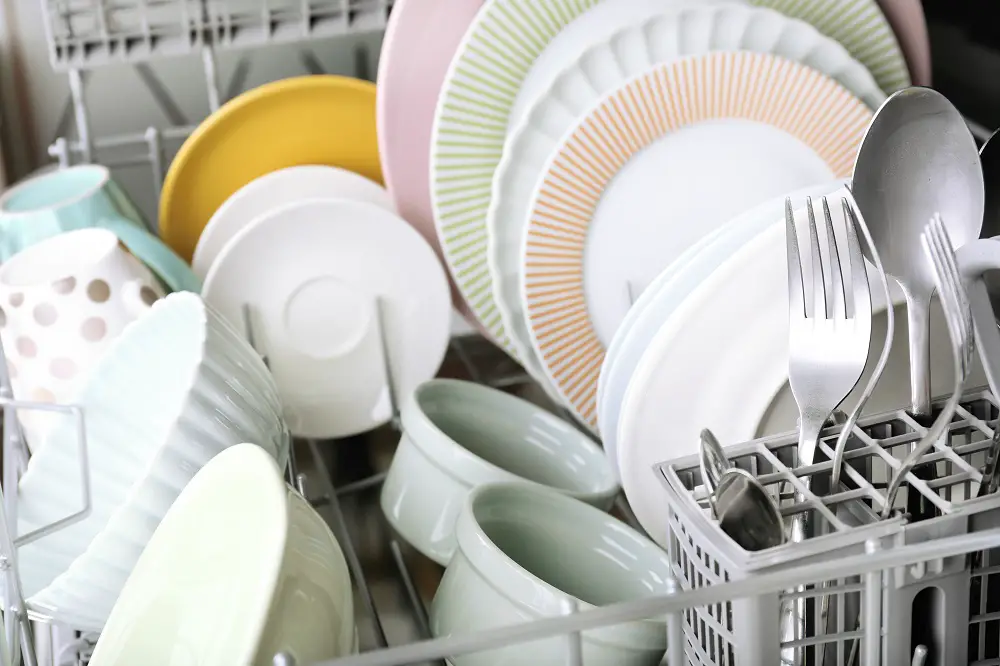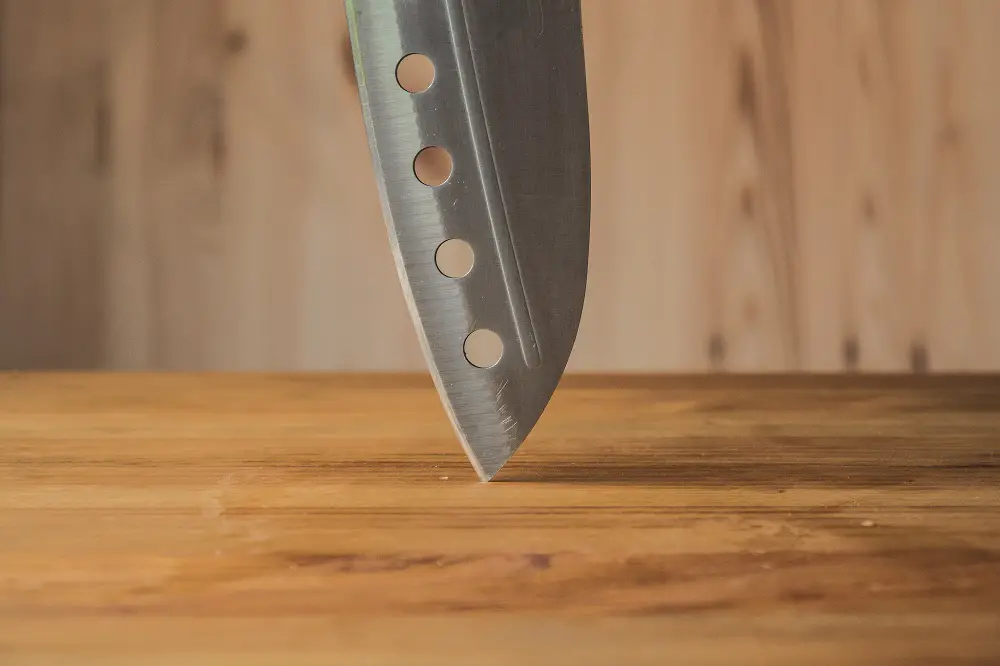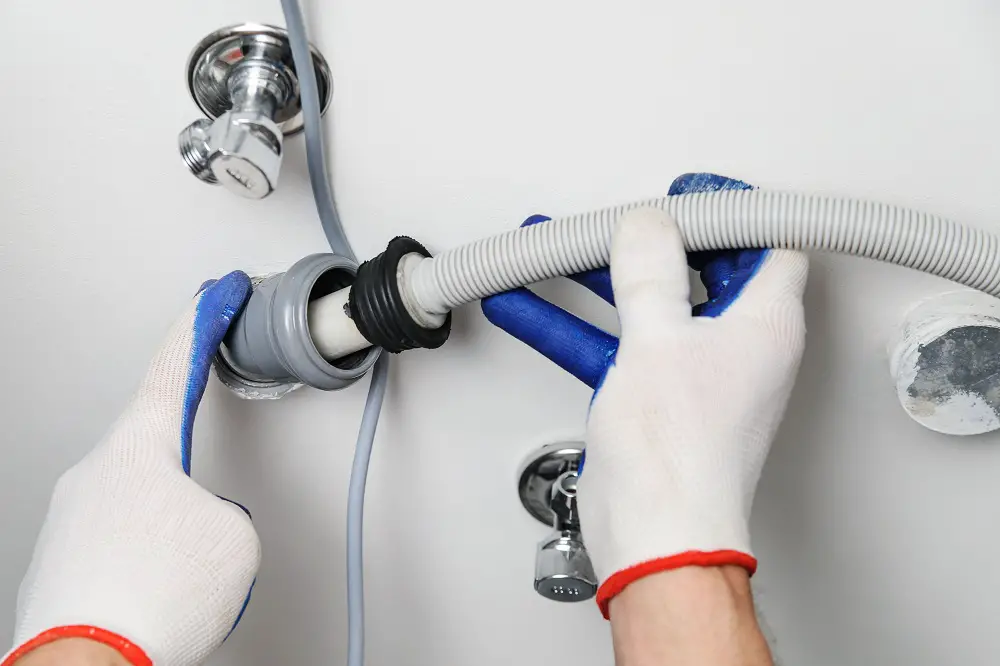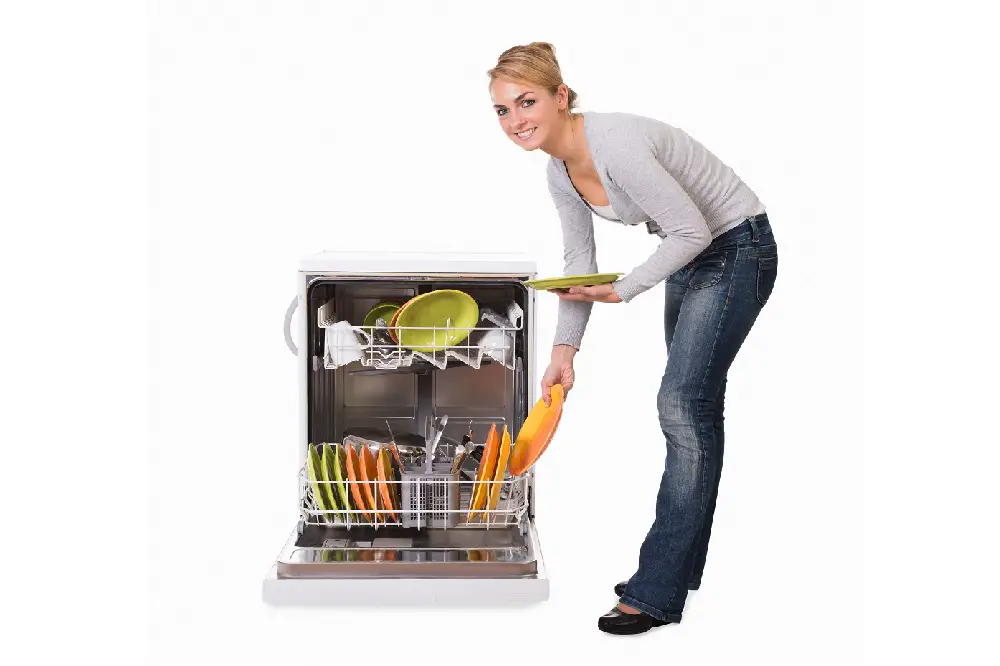If you live in a small apartment or don’t have enough space for a full-size dishwasher, a countertop dishwasher can be a great solution for you. Countertop dishwashers are compact, portable, and easy to use. They are designed to fit on your countertop and connect to your sink’s faucet, drawing in water and then expelling it through a drain hose that empties through your sink’s drain.
Using a countertop dishwasher is simple and straightforward. First, make sure you have all the necessary components, including the dishwasher itself, the water inlet hose, the adapter / unicouple, and the drain hose. Then, attach the water inlet hose to the dishwasher and connect the unicouple and inlet hose to the sink faucet. Fill the dishwasher with dirty dishes, add detergent, and turn it on.
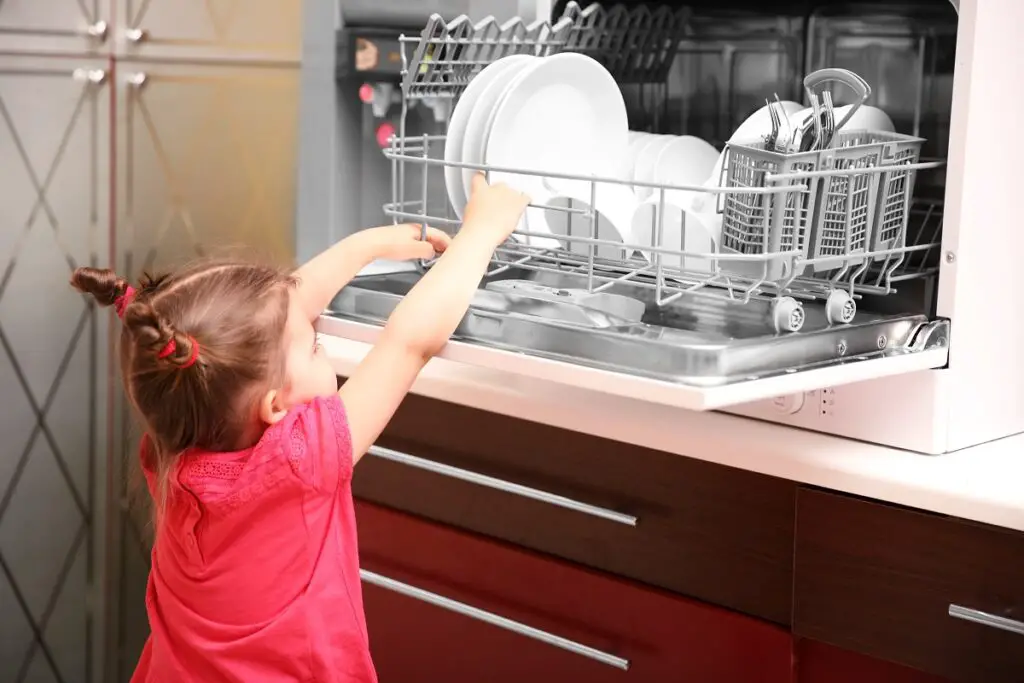
Here are the most important steps to follow when using a countertop dishwasher:
- Attach the water inlet hose to the dishwasher
- Connect the unicouple and inlet hose to the sink faucet
- Fill the dishwasher with dirty dishes
- Add detergent
- Turn on the dishwasher
Table of Contents
Preparing for Use
Before using a countertop dishwasher, it’s important to properly prepare it for use. This section will cover the steps required to connect the water supply and load the dishwasher.
Connecting the Water Supply
The first step in preparing a countertop dishwasher for use is to connect the water supply. Follow these steps to connect the water supply:
- Ensure that the dishwasher is placed close to a sink faucet, as it will require filling and draining when used.
- Attach the faucet adapter to the sink faucet. The adapter should come with the dishwasher and will allow you to connect the dishwasher to the sink faucet easily.
- Connect the water supply hose to the faucet adapter. Make sure that the hose is securely attached to the adapter to prevent leaks.
- Turn on the sink faucet to allow water to flow into the dishwasher. Make sure that the water is flowing properly before starting the dishwasher.
Loading the Dishwasher
Once the water supply is connected, you can begin loading the dishwasher. Follow these steps to load the dishwasher:
- Remove any large food particles from dishes before placing them in the dishwasher.
- Place dishes in the dishwasher, making sure that they are not touching each other and that they are facing the center of the dishwasher.
- Add dishwasher detergent to the detergent dispenser. Be sure to follow the manufacturer’s instructions for the amount of detergent to use.
- Close the dishwasher door and turn it on. Most countertop dishwashers have a simple control panel with a few basic settings, such as wash cycle and temperature.
Following these steps will ensure that your countertop dishwasher is properly prepared for use and will help to ensure that your dishes are cleaned effectively.
Using the Countertop Dishwasher
Selecting the Wash Cycle
Before starting the dishwasher, it’s important to select the appropriate wash cycle for your dishes. Most countertop dishwashers come with a variety of wash cycles, including heavy, normal, rinse, rapid, glass and soak, baby bottle, and eco. Consider the level of dirt and grease on your dishes and select the appropriate cycle accordingly.
Interested in how long portable dishwashers run? Check our article.
Adding Detergent
Once you have selected the wash cycle, it’s time to add detergent. Follow the instructions provided by the manufacturer and use the appropriate amount of detergent for the selected wash cycle. In general, it’s recommended to use a small amount of detergent to avoid over-sudsing and ensure that your dishes come out clean.
Starting the Dishwasher
After adding detergent, load the dishwasher with your dishes, attach the inlet hose and drain hose, plug the dishwasher in, turn on the hot water, and start the wash cycle. Make sure to evenly space dishes with the dirty side angled down toward the water jets to ensure that you get clean dishes every time.
Storing the Dishwasher
When you are finished using the dishwasher, unplug it and store the hoses in a safe and dry place. If you plan on storing the dishwasher for an extended period of time, make sure to drain any remaining water and clean the interior to prevent mold and mildew growth.
By following these simple steps, you can ensure that your countertop dishwasher works efficiently and effectively, providing you with clean dishes every time.
Maintenance and Troubleshooting
Countertop dishwashers require regular maintenance to ensure they function properly. Here are some tips to help you maintain your dishwasher and troubleshoot common issues.
Maintenance controls lifespan, check our article about the actual lifespan of portable dishwashers.
Dealing with Common Issues
If your countertop dishwasher is not working as it should, check the following:
- Make sure the dishwasher is properly connected to a power source and the water supply.
- Check the inlet and drain hoses for any kinks, clogs, or damage.
- Ensure the dishwasher door is properly closed and latched before starting a cycle.
- Check the spray arm for any blockages or damage.
If you have checked all of the above and your dishwasher is still not functioning properly, refer to the manufacturer’s instructions or contact their customer support for assistance.
Cleaning the Dishwasher
It is important to keep your countertop dishwasher clean to prevent the buildup of dirt and debris that can affect its performance. Here’s how to clean your dishwasher:
- Turn off the dishwasher and unplug it from the power source.
- Wipe down the interior and exterior of the dishwasher with a damp cloth and mild detergent.
- Remove any food debris or residue from the dishwasher’s spray arm and interior walls.
- Run a cycle with a dishwasher cleaner to remove any buildup or odors.
Cleaning the Filters
The filters in your countertop dishwasher help to trap food particles and prevent them from clogging the drain. Here’s how to clean your dishwasher’s filters:
- Turn off the dishwasher and unplug it from the power source.
- Remove the dishwasher’s bottom rack to access the filters.
- Remove the filter by hand or with a screwdriver, depending on the instructions in your product manual.
- Rinse the filter under running water to remove any food debris or residue.
- Replace the filter and reattach the bottom rack.
Read our full guide on how to clean a countertop dishwasher.
Takeaways
Using a countertop dishwasher is a convenient and effective solution for those who are short on space or living in a small apartment. The process of setting up and using a countertop dishwasher is simple and straightforward, but it is important to follow the proper steps to ensure that it is properly prepared for use and maintained for long-term use.
Some of the key takeaways from this beginner’s guide to using a countertop dishwasher include:
- Before using a countertop dishwasher, it is important to properly prepare it for use by connecting the water supply and loading the dishwasher.
- When using a countertop dishwasher, selecting the appropriate wash cycle for your dishes and using the appropriate amount of detergent for the selected wash cycle is important.
- To ensure that your countertop dishwasher functions properly, it is important to perform regular maintenance, including cleaning the dishwasher’s filters and removing any buildup or odors.
- If you encounter any issues with your countertop dishwasher, it is important to troubleshoot the issue and refer to the manufacturer’s instructions or contact their customer support for assistance.
Overall, by following the steps outlined in this guide and performing regular maintenance, you can ensure that your countertop dishwasher provides you with clean dishes every time, while also being a convenient and space-saving solution for your kitchen.
